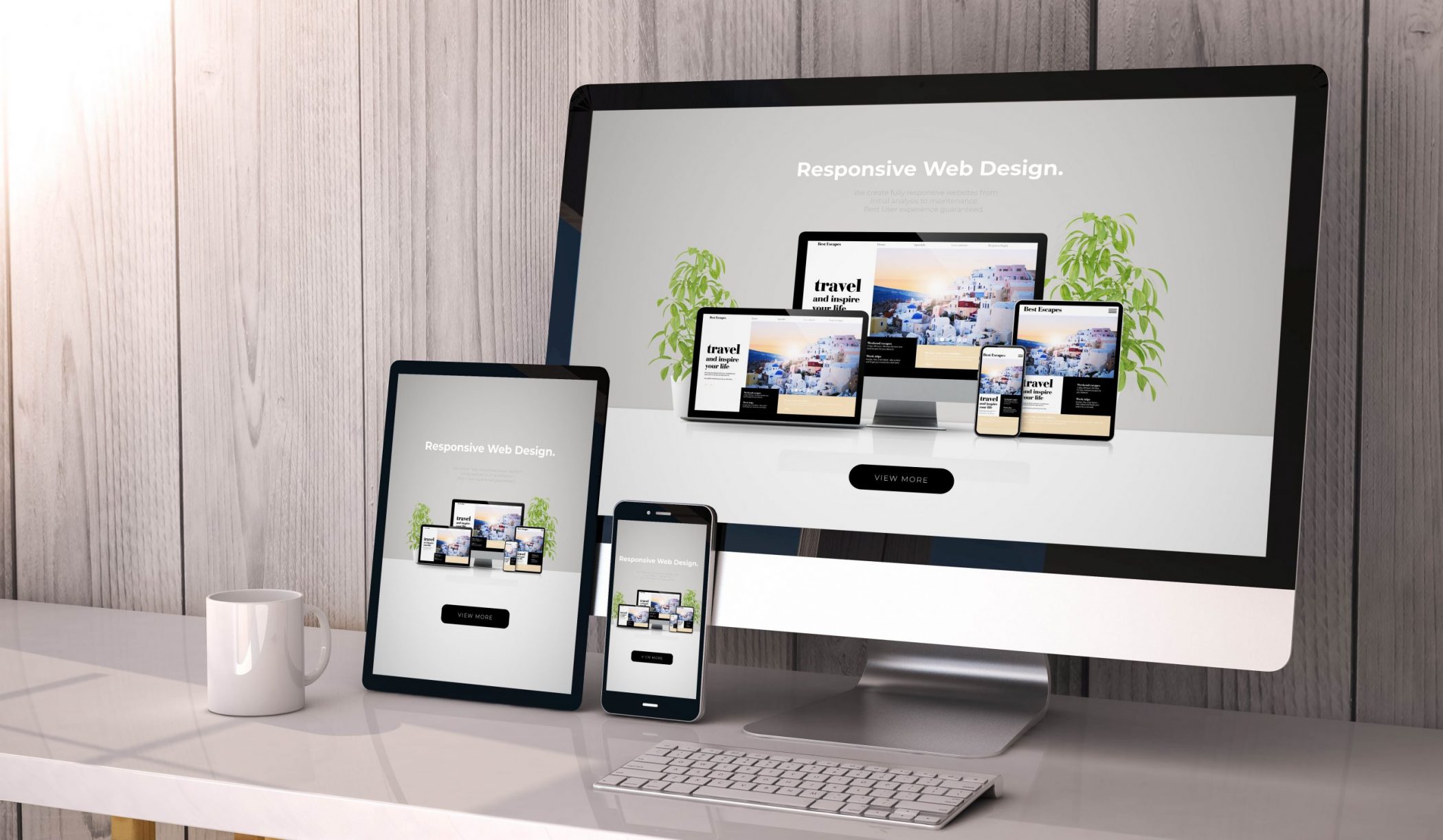Innovative Website Design Methods to Keep Your Site Ahead of the Contour
Techniques such as accepting receptive layout and including microinteractions not just improve individual experience but additionally foster deeper interaction. The assimilation of attributes like dark mode and AI-driven personalization can significantly affect individual complete satisfaction and accessibility.
Welcoming Responsive Layout
Embracing receptive design is vital for modern-day internet development, as it makes certain that web sites offer an optimum watching experience throughout a vast array of devices. With the proliferation of mobile phones, tablets, and numerous display sizes, a fixed design is no more appropriate. Receptive style permits internet pages to adapt fluidly to different viewport measurements, boosting functionality and access.
Trick components of receptive style consist of versatile grid systems, which allow design adjustments via loved one systems rather of fixed pixels - las vegas web design. Additionally, media inquiries play an essential duty by using unique design policies based upon device attributes, such as display resolution and alignment. This approach not only boosts customer experience yet likewise favorably affects search engine optimization (SEARCH ENGINE OPTIMIZATION), as online search engine prioritize mobile-friendly websites

Additionally, receptive style cultivates consistency across platforms, creating a cohesive brand picture. As users significantly switch over between devices, keeping visual and useful harmony is essential for interaction. By purchasing responsive design, organizations can accommodate varied user requirements, eventually raising website traffic and conversion rates. In recap, adopting responsive layout is not merely a trend however a requirement for any type of web site intending to grow in today's digital landscape.
Utilizing Microinteractions
Microinteractions play a crucial role in improving customer experience on sites by giving refined comments and interaction hints. These tiny, interactive moments serve to direct customers, making their navigating more user-friendly and enjoyable. web design las vegas. As an example, a straightforward animation that happens when a button is clicked can verify user actions, decreasing uncertainty and enhancing contentment.
Utilizing microinteractions properly involves recognizing essential minutes within the customer journey where comments is necessary. Typical applications consist of hover states, packing indicators, and verification messages. Each of these communications need to be created to align with the overall aesthetic and performance of the website, making certain a cohesive experience.
In addition, microinteractions can likewise act as branding possibilities. Thoughtfully crafted animations that show a brand name's personality can leave a long-term impact, reinforcing identification without overwhelming the user.
It's necessary to strike an equilibrium; while microinteractions improve use, too much use may result in interruptions. Consequently, developers must prioritize simpleness and clarity, guaranteeing that each microinteraction adds worth. Eventually, when executed carefully, microinteractions can considerably raise an internet site's user experience, fostering deeper engagement and encouraging repeat sees.
Carrying Out Dark Setting
Dark setting has actually ended up being an increasingly prominent attribute in website design, appealing to customers who favor a darker color combination for numerous factors, consisting of lowered eye stress and enhanced battery life on OLED displays. Applying dark mode effectively needs a thoughtful approach to shade choice, making sure that text stays clear against darker backgrounds.
Secret considerations consist of the contrast ratio; text should be quickly understandable, staying clear of combinations that strain the eyes. Making use of shades of grey instead of pure black can provide a more visually pleasing experience.
An additional crucial facet is the overall interface (UI) adjustments. Symbols and switches should be designed to keep presence while integrating with the dark theme. Furthermore, interest to branding is essential; logo designs and photos may need adaptation to guarantee they stand out in dark setting without endangering brand identity.
Offering users with a toggle choice for dark setting boosts access, as preferences can differ extensively. It is likewise advisable to bear in mind that not all customers choose dark mode, so keeping a light setting alternative is crucial. By incorporating dark mode thoughtfully, designers can improve user complete satisfaction and involvement, positioning their internet sites as user-centric and contemporary.
Leveraging AI in Style
As website design remains to advance, the integration of expert system (AI) supplies developers innovative devices to improve their creative procedures and improve user experiences. AI-driven layout tools make it possible for creators to automate recurring tasks, permitting them to concentrate on higher-level critical reasoning and creativity. For example, AI can useful reference examine user interactions and preferences to suggest design alterations that satisfy particular audiences, thus raising engagement.
In addition, artificial intelligence algorithms can assist in producing layouts and color design that resonate with target demographics. By leveraging data-driven understandings, developers can make and predict fads notified choices that maintain their websites have a peek at these guys enticing and pertinent. Chatbots, powered by AI, can likewise boost customer support and communication, providing real-time help and you could try this out guiding visitors via the site.
Additionally, AI-generated content can improve the production of personalized experiences, allowing sites to adapt dynamically to individual actions. This versatility not only boosts the user experience yet also promotes brand name commitment. As AI continues to development, its duty in website design will likely increase, making it necessary for developers to accept these innovations to remain competitive in the digital landscape.
Prioritizing Access Features
In today's digital landscape, focusing on accessibility features is essential for developing inclusive internet experiences. This commitment not only expands your audience yet likewise improves the total individual experience. By incorporating access right into your website design, you guarantee that individuals with specials needs can navigate your site properly, thus promoting a sense of belonging.
Key components of accessible design include using semantic HTML, which gives context to assistive innovations. In addition, developers must carry out sufficient shade contrast, ensuring that text is understandable against its background for users with aesthetic disabilities. Alt message for pictures is another vital feature, enabling screen viewers to communicate aesthetic web content to those that can not see it.

Verdict
These components not just boost customer involvement yet additionally ensure inclusivity, catering to diverse user preferences. By integrating these methods, companies can produce a seamless and appealing individual experience that promotes brand loyalty and drives sustained growth.
Approaches such as embracing responsive design and integrating microinteractions not just boost customer experience yet likewise foster much deeper involvement. By spending in receptive style, companies can cater to varied customer demands, inevitably raising website traffic and conversion prices.As web design continues to evolve, the integration of synthetic intelligence (AI) provides designers cutting-edge devices to improve their imaginative processes and improve customer experiences. AI can examine user interactions and preferences to suggest design modifications that provide to details target markets, consequently boosting interaction.
These elements not only boost individual engagement yet additionally make certain inclusivity, providing to varied individual preferences.